Issue Archive
Table of Contents
EDITORIAL
Introduction to a review series on banked allogeneic immune effector cells
Complex patient-specific manufacturing and variable potency due to poor T-cell fitness limit advances in autologous chimeric antigen receptor T therapies and support the potential attractiveness of having potent immune effector cell therapy that is readily available “off the shelf.” Edited by Associate Editor Helen Heslop and authored by leading experts, this review series focuses on several types of banked allogeneic immune cell therapies under development, highlighting their attributes and speculating on their anticipated future place in the therapeutic armamentarium.
BLOOD COMMENTARIES
PLENARY PAPER
Hydroxyurea for secondary stroke prevention in children with sickle cell anemia in Nigeria: a randomized controlled trial
Clinical Trials & Observations
The risk of recurrent stroke in untreated sickle cell anemia (SCA) is high, necessitating chronic transfusion therapy where resources allow. To identify feasible alternative therapy for children with SCA in resource-limited areas, Abdullahi and colleagues undertook a randomized, double-blind trial of 2 fixed-dose regimens of hydroxyurea. In this Plenary Paper, the authors provide evidence that both low- and moderate-dose hydroxyurea regimens are effective for secondary stroke prevention when chronic transfusion therapy is not possible.
REVIEW SERIES
Genome-edited allogeneic donor “universal” chimeric antigen receptor T cells
Complex patient-specific manufacturing and variable potency due to poor T-cell fitness limit advances in autologous chimeric antigen receptor T therapies and support the potential attractiveness of having potent immune effector cell therapy that is readily available “off the shelf.” Edited by Associate Editor Helen Heslop and authored by leading experts, this review series focuses on several types of banked allogeneic immune cell therapies under development, highlighting their attributes and speculating on their anticipated future place in the therapeutic armamentarium.
Engineered and banked iPSCs for advanced NK- and T-cell immunotherapies
Complex patient-specific manufacturing and variable potency due to poor T-cell fitness limit advances in autologous chimeric antigen receptor T therapies and support the potential attractiveness of having potent immune effector cell therapy that is readily available “off the shelf.” Edited by Associate Editor Helen Heslop and authored by leading experts, this review series focuses on several types of banked allogeneic immune cell therapies under development, highlighting their attributes and speculating on their anticipated future place in the therapeutic armamentarium.
Allogeneic natural killer cell therapy
Complex patient-specific manufacturing and variable potency due to poor T-cell fitness limit advances in autologous chimeric antigen receptor T therapies and support the potential attractiveness of having potent immune effector cell therapy that is readily available “off the shelf.” Edited by Associate Editor Helen Heslop and authored by leading experts, this review series focuses on several types of banked allogeneic immune cell therapies under development, highlighting their attributes and speculating on their anticipated future place in the therapeutic armamentarium.
Natural killer T cells and other innate-like T lymphocytes as emerging platforms for allogeneic cancer cell therapy
Complex patient-specific manufacturing and variable potency due to poor T-cell fitness limit advances in autologous chimeric antigen receptor T therapies and support the potential attractiveness of having potent immune effector cell therapy that is readily available “off the shelf.” Edited by Associate Editor Helen Heslop and authored by leading experts, this review series focuses on several types of banked allogeneic immune cell therapies under development, highlighting their attributes and speculating on their anticipated future place in the therapeutic armamentarium.
Banking on virus-specific T cells to fulfill the need for off-the-shelf cell therapies
Clinical Trials & Observations
Complex patient-specific manufacturing and variable potency due to poor T-cell fitness limit advances in autologous chimeric antigen receptor T therapies and support the potential attractiveness of having potent immune effector cell therapy that is readily available “off the shelf.” Edited by Associate Editor Helen Heslop and authored by leading experts, this review series focuses on several types of banked allogeneic immune cell therapies under development, highlighting their attributes and speculating on their anticipated future place in the therapeutic armamentarium.
HEMATOPOIESIS AND STEM CELLS
Aging drives Tet2+/− clonal hematopoiesis via IL-1 signaling
Clonal hematopoiesis (CH) is a common, age-associated phenomenon where somatic mutations in hematopoietic stem and progenitor cells impart a selective advantage and expansion of mutant progeny in blood. Using a novel irradiation- and transplantation-free murine model of Tet2-mutant CH, Caiado et al demonstrate the importance of age-associated inflammation (“inflammaging”) in clonal outgrowth and define interleukin-1 signaling as a therapeutically targetable driver of clonal expansion.
LYMPHOID NEOPLASIA
Genetic subgroups inform on pathobiology in adult and pediatric Burkitt lymphoma
Thomas et al present a whole-genome sequencing analysis of 230 pediatric and adult Burkitt lymphomas (BL) and compare these with data from 295 diffuse large B-cell lymphomas. The authors report that adult and pediatric BL share a common pathobiology with Epstein-Barr virus status, influencing the genetic and molecular profiles in both entities. BL may be divided into 3 genetic subgroups with distinct molecular underpinnings, spurring research to better define this rare disease.
MYELOID NEOPLASIA
Secreted mutant calreticulins as rogue cytokines in myeloproliferative neoplasms
Mutations in calreticulin (CALR), an endoplasmic reticulum chaperone, modify the protein’s C-terminus, leading to intracellular ligand-independent thrombopoietin receptor signaling and causing myeloproliferative neoplasms (MPNs). Mutant CALR is also found in a soluble form, but its significance is unknown. Pecquet et al revealed that soluble mutant CALR acts in a paracrine fashion to selectively enhance the growth of surrounding CALR-mutant hematopoietic cells. These novel insights suggest new therapeutic opportunities to target CALR-mutant MPNs.
THROMBOSIS AND HEMOSTASIS
Proximity proteomics identifies septins and PAK2 as decisive regulators of actomyosin-mediated expulsion of von Willebrand factor
Weibel-Palade bodies (WPB) are endothelial cell–specific secretory organelles that store the hemostatic protein von Willebrand factor, along with many inflammatory and angiogenic mediators; the regulation of release of this cargo is essential for normal hemostasis. El-Mansi et al uncovered new regulators of WPB exocytosis and cargo expulsion through a high-throughput dual loss-of-function screen. Their data identified p21-activated kinase 2 (PAK2)–mediated recruitment of cytoskeletal septin as a crucial step in WPB exocytosis, furthering our understanding of this important hemostatic process.
TRANSPLANTATION
LETTERS TO BLOOD
Risks of therapy-related hematologic neoplasms beyond myelodysplastic syndromes and acute myeloid leukemia
Clinical Trials & Observations
WT1 and DNMT3A play essential roles in the growth of certain patient AML cells in mice
BLOOD WORK
ERRATA
-
Cover Image
Cover Image
![issue cover]()
Septin rings (green) are required for efficient secretion of von Willebrand factor (blue) from endothelial cells. Ring recruitment is independent of actin (magenta) as it occurs in the presence of the actin inhibitor cytochalasin E. See the article by El-Mansi et al on page 930.
- PDF Icon Front MatterFront Matter
- PDF Icon Table of ContentsTable of Contents
- PDF Icon Editorial BoardEditorial Board
Advertisement intended for health care professionals
Email alerts
Advertisement intended for health care professionals



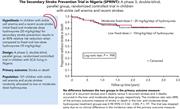
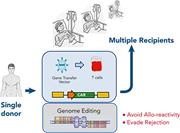



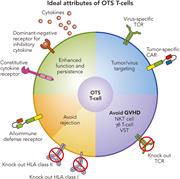
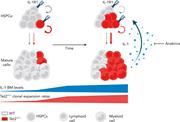
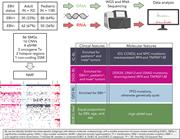

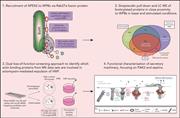


Hydroxyurea: how much is enough?
Clinical Trials & Observations